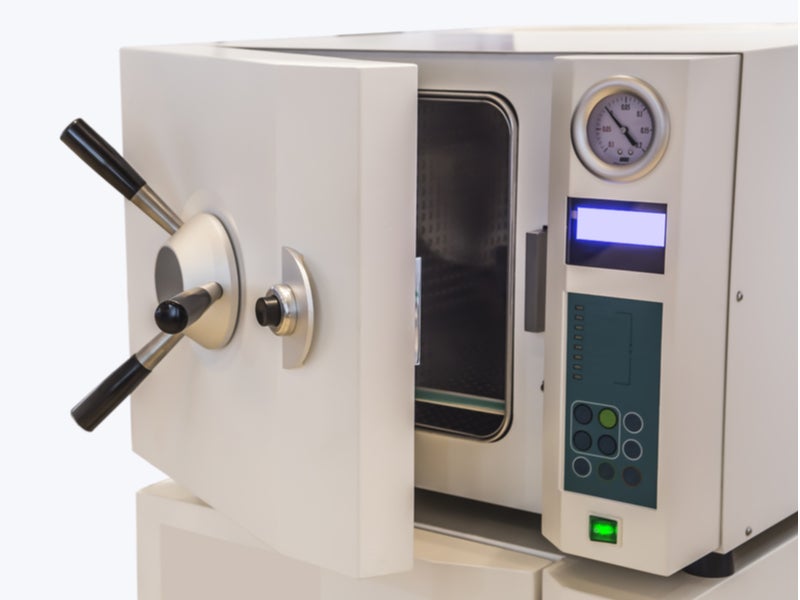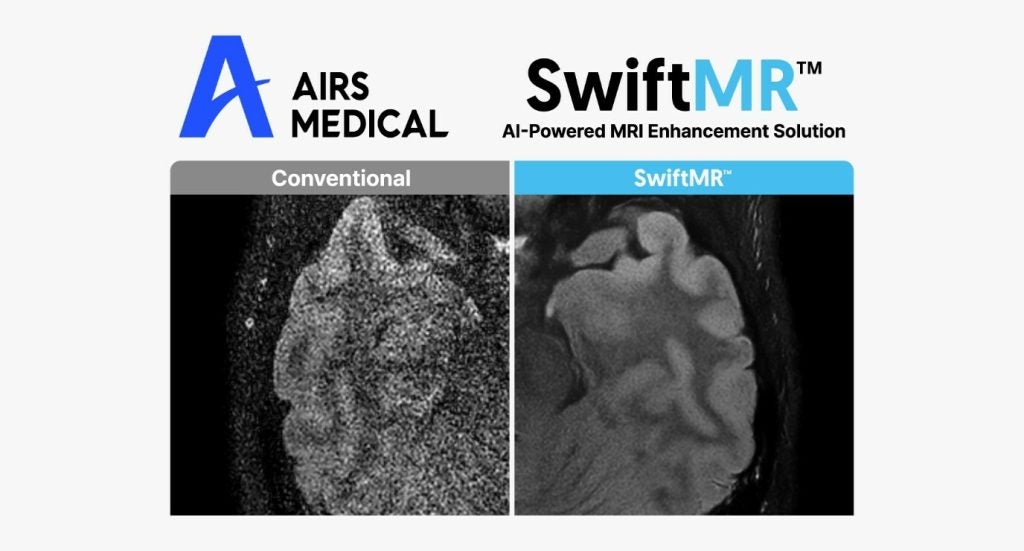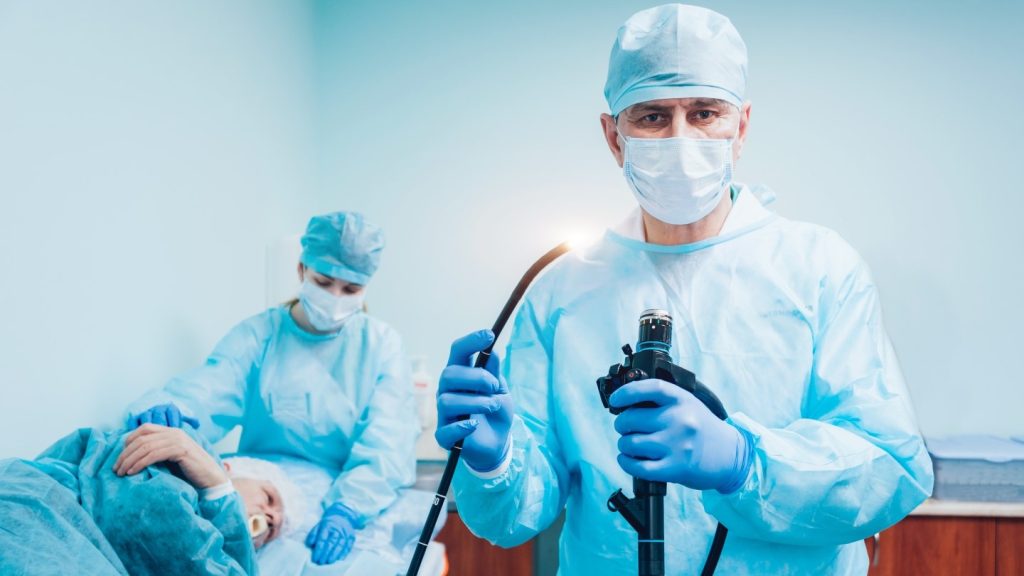
At the end of last year, six former teachers from suburban Chicago launched a lawsuit blaming a nearby medical device sterilisation plant for their cancer diagnoses. Sterigenics’ facility in Willowbrook, Illinois had used ethylene oxide gas to decontaminate medical equipment since it opened in 1984. The retired educators believe this chemical is the reason they’re sick. Dozens of similar claims against Sterigenics have been brought by people who lived and worked near the factory, which was forced to cease operation in February 2019.
Over half of all medical devices in the US are sterilised with ethylene oxide (EtO). This man-made chemical is an incredibly powerful cleaning agent — so powerful in fact that it’s often used to sterilise sutures in their final packaging. But, allegations like the ones in Illinois have called its safety into question. It’s led to the shutdown of multiple EtO processing factories across the country and some state legislators are even considering banning industrial EtO sterilisation altogether.
But although the ban is in the name of public safety, it could have grave consequences for vulnerable patients. Hospital-acquired infections are a major problem, causing around 100,000 deaths in the US every year, according to the Centers for Disease Control. In order to reduce the risk of infection, proper medical device sterilisation is vital.
“It’s important to note at this time there are no readily available processes or facilities that can serve as viable alternatives to those that use ethylene oxide to sterilise these devices,” former acting commissioner of the FDA, Ned Sharpless said in a statement in October 2019. “In short: this method is critical to our healthcare system and to the continued availability of safe, effective and high-quality medical devices.”
How does it clean?
There are three key characteristics that make ethylene oxide sterilisation very versatile explains Mairead Smith, senior project engineer, health devices, ECRI Institute.
“The first is compatibility with a broad range of materials, including those that may be sensitive to moisture, high temperatures or gamma radiation. The second is the ability to penetrate materials, such as packaging or device areas that are difficult to reach. The third is the convenience due to the combination of EtO’s broad compatibility and penetration. For example, devices may be sterilised within a pre-packaged kit or within large cardboard pallets.”
How well do you really know your competitors?
Access the most comprehensive Company Profiles on the market, powered by GlobalData. Save hours of research. Gain competitive edge.

Thank you!
Your download email will arrive shortly
Not ready to buy yet? Download a free sample
We are confident about the unique quality of our Company Profiles. However, we want you to make the most beneficial decision for your business, so we offer a free sample that you can download by submitting the below form
By GlobalDataSo, why is the industry only becoming less enthusiastic about EtO now? Smith explains that what we know about the chemical has changed over time. The US Environmental Protection Agency amended EtO’s health value in December 2016, declaring it 60 times more toxic to children (and 30 times more toxic to adults) than previously estimated.
“The EPA reports the long-term effects of EtO exposure can cause damage to the brain and nervous system, as well as an increased risk of certain cancers, particularly breast cancer and white blood cell cancers,” Smith adds.
Industry experts have hinted that the situation has been exacerbated by the FDA failing to respond to the EPA’s report on EtO in a timely manner. It wasn’t until the environmental agency released new monitoring data on the gas in summer 2018 that state regulators started taking the situation seriously and lawsuits began to emerge.
The carcinogenic claims are alarming, but a wholesale ban of EtO would have a large impact on the healthcare system. As Sharpless warned, it could result in widespread shortages of critical medical devices, endangering patients’ lives. The topic was discussed at an FDA advisory committee meeting in early November 2019.
“Currently, there are no validated industrial sterilisation alternatives that could completely replace EtO sterilisation, so additional closures of EtO processing facilities would have the potential to impair the U.S. healthcare system,” agrees Dr Amanda Sivek, principal project engineer, health devices, also of the ECRI Institute.
What are the alternatives to EtO?
Ionising radiation
Around 45% of medical devices globally are currently sterilised using ionising radiation. Gamma is the most popular form and tends to be used when materials are unsuitable for the high temperatures of autoclaving.
But as Sivek points out, there are many medical devices for which this sterilisation method would not be suitable.
“These modalities differ from EtO in that ionising radiation can modify materials, particularly polymers, which means that devices or supplies may not perform the same after being irradiated,” she says.
Heat sterilisation
The two main types of heat sterilisation are dry heat and steam methods. Steam works well for medical devices that are made of stable, heat-resistance materials (such as steel). This is why reusable surgical tools are often sterilised in an autoclave to kill any microorganisms that may be present (including the tough-to-kill bacterial spores).
But devices containing plastic and electronics would be damaged using this method. And even medical instruments that can take the heat have to be allowed to cool, and dried completely over several hours, before they’re able to be used. A build up of water drops inside medical devices can also cause problems.
Dry heat sterilisation is a longer process than its steam counterpart and requires higher temperatures to destroy contaminants and spores. Its advantage over steam is that devices susceptible to water damage can be cleaned this way, but they have to highly heat resistant.
“Steam and dry heat sterilisation processes can damage moisture or heat-sensitive products, making these methods unsuitable for many medical devices and supplies that are currently sterilised using EtO gas,” Sivek adds.
Non-industrialised methods
Vaporised hydrogen peroxide, nitrogen dioxide, chlorine dioxide and peracetic acid are other potential methods of sterilisation. But none of these gases are used in industrial sterilisation processes yet. They’re also not able to penetrate packaged devices like EtO can.
“Industry representatives and FDA panel members said it may take up to 10 years before any of these non-industrial sterilisation methods could be validated and industrialised,” reveals Sivek.
What happens now?
The EtO situation is complicated. Regulators, manufacturers and legislators are in agreement that this issue will not be an easy one to solve, particularly as no other industrial sterilisation process can take EtO’s place right now. And a decade is a long time to wait before another chemical could be validated and industrialised. Many questions remain, including how to incentivise the adoption of EtO reduction or replacement and how to prevent medical device shortages in the meantime.
The FDA has stressed its commitment to develop solutions to avoid potential shortages and encourage new ways to sterilise equipment which do not have an adverse impact on public health. But whether these prove to be effective remain to be seen.





